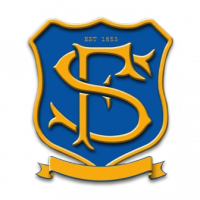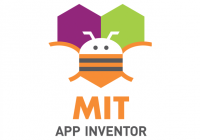App development at Frankley School
Tags: Computational thinking | Design | STEM/STEAM | Technology | App development | Primary |
Students at Frankley school design and program their own mobile apps to solve problems in the community.
Background
For three years, Brendon Anderson, a teacher at Frankley School New Plymouth, has been running an app development program with his year 5-6 students.
The program started when a software developer and parent of one Brendon's students emailed him a link to the Tech Girls Movement Superhero competition – a competition that invites girls aged 7-17 to form teams and design apps that solve real-world problems.
Following the success of those participating in the Tech Girls Superhero competition, Brendon decided to go beyond the scope of the competition and open up an app development unit for all his year 5-6 students.
In 2019, Brendon ran an intensive 12-week app-development program with teams of boys and girls in his class.
Design thinking
To get started, students discussed the United Nations sustainable development goals and considered the areas of poverty, peace, the environment, equality, education or health as potential places for technological improvement.
They then looked at their own immediate contexts – their school and communities – as areas to focus their thinking.
The design process involved:
- identifying a problem
- researching a problem
- generating ideas
- designing and planning a technological solution (a mobile app)
- researching their app's point of difference from similar apps on the market
- creating, building and making the app
- testing their design, presenting it, getting feedback, evaluating, and redesigning their solution.
Pedagogy and approaches: Deep learning
"We had a belief that by offering challenging and meaningful and difficult tasks; and tasks that involved creative and critical thinking; and tasks that were truly collaborative – that this would result in more deep learning for them."
– Brendon Anderson, Teacher
"The learning was real – their app could make a real difference."
Brendon and his collaborative partner, Merryl McAllister (deputy principal) had been doing professional learning using Michael Fullan's A rich seam: How new pedagogies find deep learning . They wanted to find a way to offer their students an authentic context for learning that involved Fullan's 6 C's for education:
- creativity
- collaboration
- critical thinking
- communication
- citizenship
- character.
They decided to inquire into whether app development would offer their students an authentic context for deep learning.
"We wanted our students to be tackling real problems. We wanted them to get a sense of – this is their world too. How do they want to help in the world? What problems do they want to solve?"
– Brendon Anderson, Teacher
They also wanted to build learner agency by allowing students to make the decisions, stepping in only to help teams find direction or overcome technical hurdles.
They handed over the reins to students, who created a diverse range of apps addressing problems on local, national, and global scales.
Students created a range of mobile apps
"In the design process and the whole unit of learning – it was students making decisions. Sometimes they would make the wrong decisions, but I had to make sure I didn't step in. By allowing them to think their way out of those, they strengthened their design process."
– Brendon Anderson, Teacher
This Stuff article features primary school students from Frankley school, who developed apps to:
- educate about bullying
- help fisherman stay within catch-size regulations
- help trampers stay safe in the bush.
Not all the apps students created tackled big problems. Some teams made apps that were playful or interest-based or focused on their own personal contexts. For example, apps that:
- offered tips and tricks for scootering around New Plymouth
- recommended video games based on genre preferences
- helped classmates learn maths.
Resources for learning
Brendon created a project plan to help students move through the design process.
The plan has sections for:
- reflecting on learning
- developing research questions
- collaborating and delegating roles
- following a design process
- reflecting on learning
- doing a competitor analysis and a business plan
- templates for wireframing the app.
Frankley School students used digital or paper wireframes to plan their apps.
Wireframes
A wireframe is a visual guide that represents the structure and frame of an app or website. Also known as a screen blueprint, a wireframe:
- organises the elements of an app (content, buttons, headings etc.) into a hierarchy before coding and development begins
- makes the actual app-building process clearer
- is helpful for generating ideas
- can be both hand-drawn or designed using digital tools.
More information »
Wireframing: App development in the classroom
Wireframing and tools for developing wireframes are given in detail on this Enabling e-Learning page.
Programming with MIT App Inventor 2
Although there are many pathways towards making an app, Brendon decided that App Inventor 2 would be the best tool for his student profile. This is because MIT App Inventor was designed for newcomers to programming. Aspects that drew Brendon to choose App Inventor 2:
-
Like MIT's popular coding-teaching tool, Scratch , App Inventor features a visually organised, block-style, drag-and-drop coding interface.
- It gives newcomers to programming the opportunity to code without prior knowledge of any of the programming languages.
- It has easy-to-follow tutorials and beginner guides that can be found on its official website, many designed for primary school-age students.
- It has a dedicated community forum for troubleshooting and knowledge-sharing.
- Apps can only be built for Android phones, but programming can be done on any device
- It is browser-based and free.
More information »
App development in the classroom
Tools and strategies used to design apps in the classroom are given in detail on this Enabling e-Learning page.
Connecting app development to the technology learning area
Brendon linked the work his students were doing to the progress outcomes belonging to the revised digital technologies curriculum content.
App development in particular moved his students through:
-
Computational thinking
App development provided an authentic context for taking account of end-users, and using decomposition skills to break down simple non-computerised tasks into precise, unambiguous, step-by-step instructions (algorithmic thinking). They did error-correction and debugging.
-
Designing and developing digital outcomes
Students developed, manipulated, stored, retrieved, and shared digital content in order to meet technological challenges. They identified digital devices and their purposes and understood how and why humans make them.
Working like mini-professionals
Before beginning, students divided tasks and roles according the strengths of individual team members. Students chose between them the roles of:
- researcher
- graphic designer
- project manager
- coder/programmer.
Individual students often fulfilled multiple roles.
Students learned to mediate conflict and use positive communication that fostered a collaborative atmosphere within their teams.
Brendon has connected with a number of different tech-industry mentors to help guide his teams of students working on app development.
The mentors come in during different stages of the project. They consult with groups of students, and provide:
- advice on best practise and standard approaches for coding
- advice during the planning and design stages of an app
- insights into real jobs in technology.
Brendon has found that the mentors have:
- connected student learning to the real world of work beyond the classroom
- enabled students to see themselves in future careers in tech.
Outcomes of learning
During their app development projects, students:
- were highly motivated – engagement was strong, and students often worked on their projects in their own time outside of school.
- developed agency – students made their own decisions every step of the way, building a sense of ownership over the learning.
- built resilience – students hit and overcame many hurdles along the way, including bugs in coding and the difficulties of managing a team.
- learnt how to program – they learnt about algorithms, loops, variables, and other concepts in coding.
- developed computational thinking – they learnt how to debug and solve a problem using a set of logical instructions.
- learnt how to collaborate – they allocated roles, delegated tasks, developed communication, and mediated conflicts.
- developed skills across a range of learning areas – during the project they designed logos, researched and reported, analysed statistics, practised measurement and geometry, and reflected on learning.
- understood real jobs in tech – they followed an authentic industry design-process, were mentored by professional app developers, and created working mobile apps.

